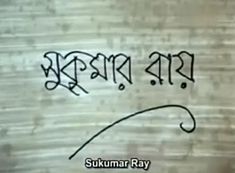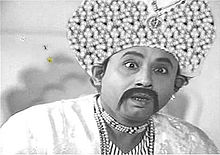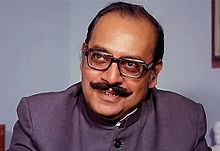Sukumar Ray (film)
Sukumar Ray is a 1987 Bengali short documentary film made by Satyajit Ray on his father, Sukumar Ray. It was released during the birth centenary year of Sukumar Ray, who was born onOctober 1887. The thirty minutes documentary features the life and some of the works by Sukumar Ray in the form of paintings, photographs and readings. This is the last documentary made by Satyajit Ray as a tribute to his father, before he died in 1992. The documentary used Sukumar Rays photographs and paintings than video recording as the film was considerably a new medium in India when Sukumar Ray died in 1923.
With Soumitra Chatterjee as a narrator, the documentary begins by showcasing some of the drawings by Sukumar Ray, drawn for the children books Abol Tabol, HaJaBaRaLa and a short story, Heshoram Hushiarer Diary The Diary of Heshoram The Clever. Explaining the lineage of Ray family starting from Hari Krishna Roy Chowdhury and Upendrakishore Ray, the documentary describes initial days of Sukumar Ray, his formation of the Nonsense Group in the college and publication of handwritten humorous magazine, Thirty Two and a Half Fries.Utpal Dutt enacts as a teacher from Rays first published poetical nonsenseplay Jhala Pala The Cacophony and provides humorous explanationtranslation of the sentence I go up, we go down in Bengali. Soumitra Chatterjee appears as Rama, the avatar of the Hindu god Vishnu, in a spoof based on an Indian epic Ramayana, Lakshmaner Shaktishel The magical spear of Lakshmana. The spoof is based on Ramas dream about the central antagonist of the Ramayana, the demonking Ravana and the spy Tapen Chatterjee providing further information about it. The documentary also focusses on Rays college days in London while studying photography, lithography and his meeting with Nobel Prizewinning littrateur, Rabindranath Tagore. While narrating his first poem Khichudi The mixture published in childrens magazine, Sandesh, launched by his father, the documentary explains how entire Ray family worked together for the growth of the magazine after the death of Upendrakishore Ray. ........
Source: Wikipedia





